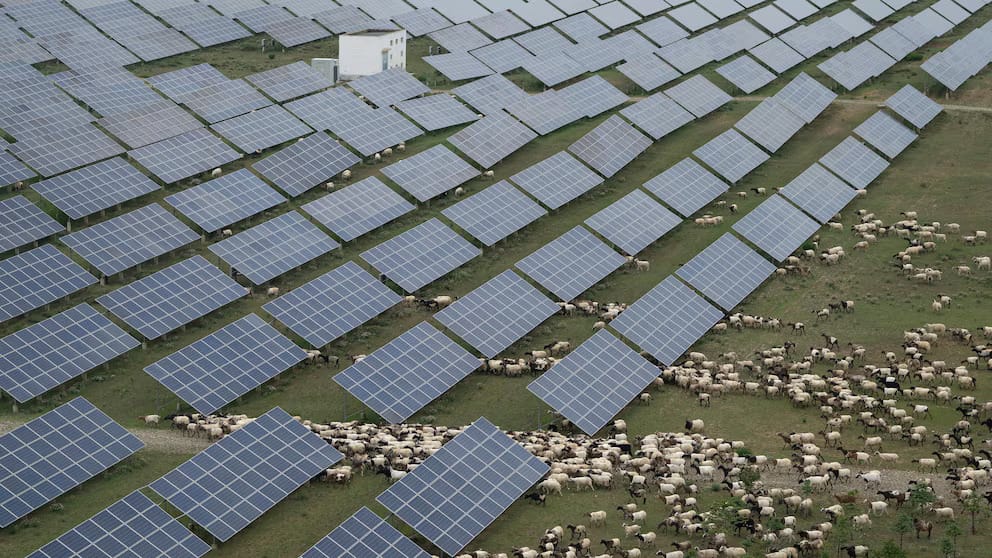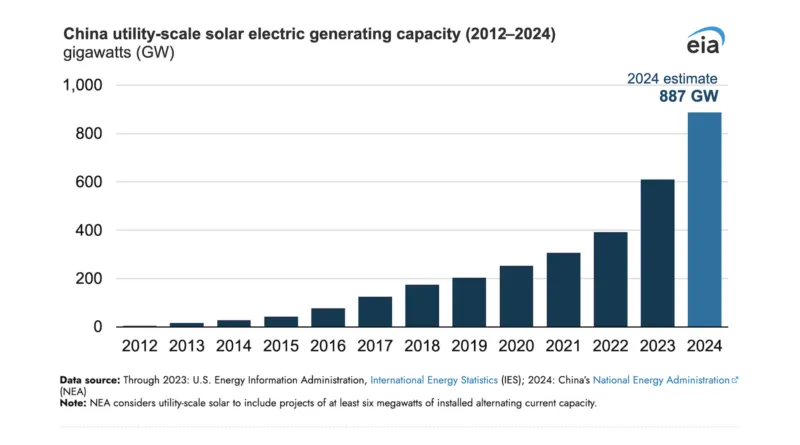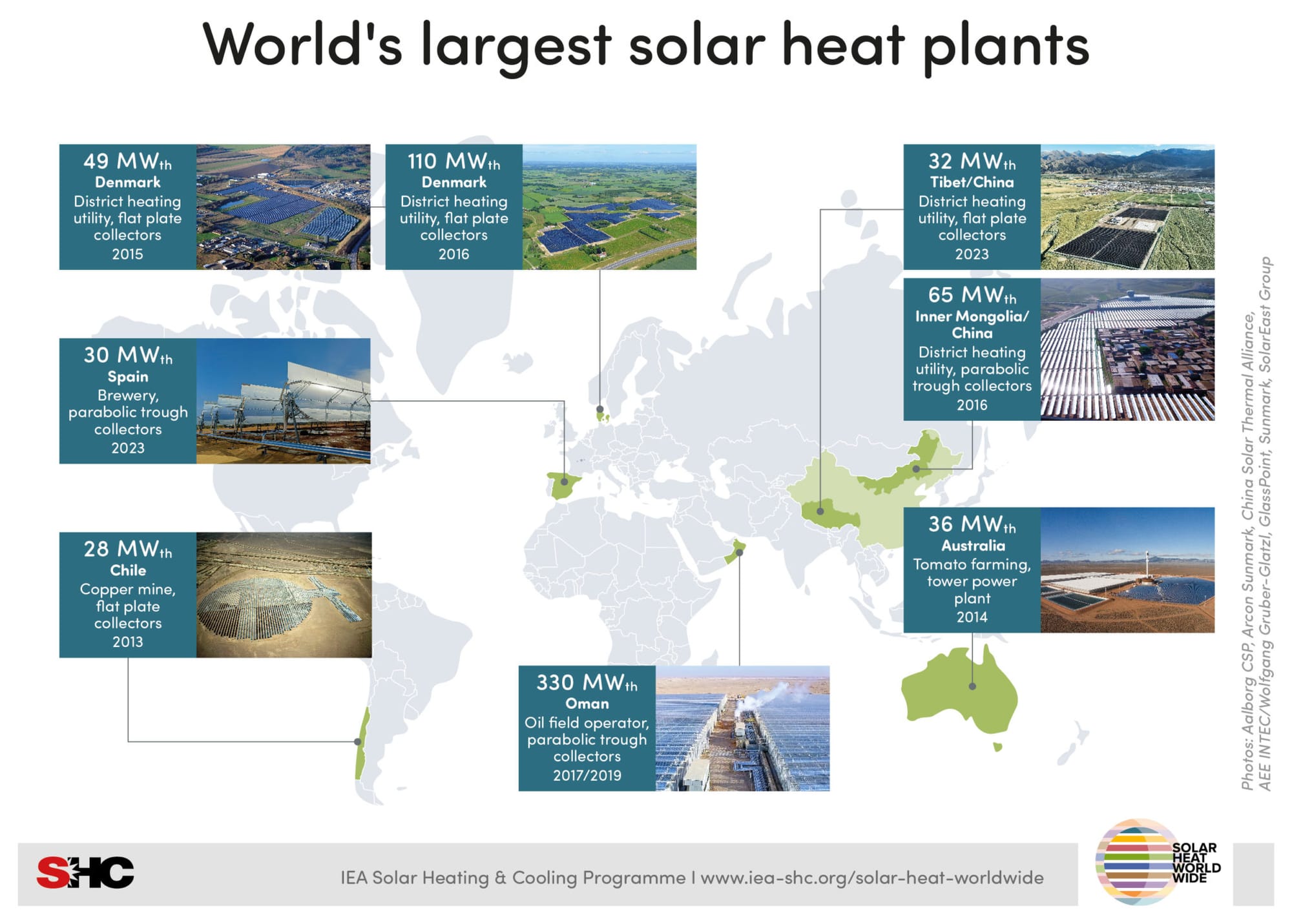World's Largest Solar Farm: How China's Unprecedented Ambition Could Reshape Global Climate Action and Energy Futures
Delve into China's strategic roadmap for achieving net-zero by 2060, centered on its massive solar farm projects.

Written by Lavanya, Intern, Allegedly The News
TALATAN, QINGHAI PROVINCE, CHINA, August 22, 2025
On the high-altitude plains of Qinghai, a silent, almost surreal landscape is unfolding. Stretching for hundreds of square kilometers, a sea of dark photovoltaic panels is transforming the stark terrain, reflecting the immense blue sky. This is the new frontier of China's climate strategy: a monumental solar farm project that, upon completion, will be the world's largest. It's a key element of a sweeping and often contradictory plan to achieve carbon neutrality by 2060. This is not just a domestic infrastructure project; it's a declaration of China's intent to lead the global energy transition, with ripple effects that will be felt in boardrooms and policy discussions across the world.
The Grand Blueprint: China's Roadmap to Net-Zero
China's commitment to peak carbon emissions before 2030 and achieve carbon neutrality by 2060 is a colossal undertaking for the world's largest emitter. For years, the country's rapid industrialization was fueled by a seemingly endless appetite for coal, a reliance that cast a long shadow over its environmental pledges. However, a significant pivot is now undeniable.
China is deploying renewable energy at a scale and speed that is unprecedented. According to a study by the Centre for Research on Energy and Clean Air (CREA), China's carbon emissions edged down 1% in the first half of 2025, extending a trend that began in March 2024. This suggests that the country's emissions may have peaked well ahead of its 2030 target. The catalyst? A record-breaking installation of solar and wind power. In the first six months of 2025 alone, China added 212 gigawatts (GW) of solar capacity, an amount exceeding the entire solar capacity of the United States. Electricity from solar has now surpassed hydropower and is on track to overtake wind to become China's largest source of clean energy.
This transition is not a simple, linear path. China is simultaneously building new coal-fired power plants, a move that perplexes many international observers. This "dual-track" strategy is a pragmatic response to the twin pressures of ensuring energy security and transitioning the economy. Coal remains a reliable, domestic energy source that provides a buffer against global market volatility and supports a grid built for baseload power. The challenge, and the core of China's long-term plan, is to gradually shift the grid's operational paradigm to accommodate the variable nature of solar and wind, with coal plants ultimately serving as flexible backup rather than primary power producers.

The Qinghai Mega-Project: A Case Study in Scale and Ambition
The massive solar farm in Qinghai province, located on the Tibetan Plateau, serves as a powerful testament to this strategy. When fully completed, the project will cover 610 square kilometers, an area larger than most major cities, and house over 7 million panels, generating enough electricity for 5 million households. The location, with its abundant sunlight and vast, unpopulated land, is ideal. However, it also highlights the central challenge of China's renewable energy push: geographical mismatch. The nation's abundant solar and wind resources are concentrated in its western and northern regions, while the industrial and population centers that require the most power are in the east and south.
To bridge this gap, China is investing heavily in a massive network of ultra-high-voltage (UHV) transmission lines. These lines, capable of carrying electricity over thousands of kilometers with minimal loss, are the circulatory system for the new energy economy. A UHV line already links Qinghai to Henan province, and two more are planned to connect to the southeastern provinces, including Guangdong. Without this colossal infrastructure investment, the power generated in the west would be stranded, and the ambitious climate goals would be unattainable.
The project also provides a secondary benefit. In this arid, dusty region, the solar panels act as windbreaks, slowing soil evaporation and allowing vegetation to take root. This unexpected ecological outcome, which local officials call a "win-win" situation, has even led to the surreal sight of sheep grazing contentedly beneath the panels, earning them the nickname "photovoltaic sheep."
The Global Supply Chain: China’s Dominance and its Geopolitical Leverage
China's solar ambition is not just about domestic transformation; it is about global market dominance. The country controls over 80% of the world's solar supply chain, from polysilicon production to module assembly. This sheer scale has driven down the cost of solar technology worldwide, making it the cheapest form of new electricity in many parts of the globe. This has been a massive boon for the global clean energy transition, accelerating adoption in developing and developed countries alike.
However, this dominance also creates a significant geopolitical vulnerability. The world’s reliance on China for solar panels is paralleled by its dependence on the country for rare earth minerals, which are essential components in high-efficiency solar panels, wind turbines, and electric vehicles. China controls a staggering portion of the global rare earth market. While the country has recently lifted some export restrictions to nations like India, the potential for using this control as a form of economic leverage remains a major concern for nations seeking to secure their own clean energy supply chains. The U.S. and the EU are now actively pursuing policies, such as the Inflation Reduction Act, to incentivize domestic production and reduce this reliance, but building a competitive and self-sufficient supply chain will be a multi-decade effort.
A Transition from Coal: The Hardest Challenge
China's energy transition is ultimately a story of its relationship with coal. As recently as 2024, China accounted for over 50% of global coal consumption and continued to permit and build new coal plants at a rapid pace. The rationale is simple: energy security and economic stability. Coal provides a predictable, on-demand power source that can compensate for the intermittent nature of renewables. It is a form of geopolitical insurance.
However, the rapid growth of renewables is starting to create a fundamental shift. In the first quarter of 2025, the increase in China's renewable electricity generation outpaced the growth in overall power demand, a potential turning point. This is forcing a re-evaluation of the role of coal. The challenge is not just technical—integrating variable renewables into a rigid grid, but also political and economic. The Chinese government is working to reform power markets and encourage more flexible operation of coal plants, but this requires significant changes to an entrenched system. The success of China's net-zero goal hinges on its ability to manage this delicate and monumental transition away from its long-standing fossil fuel foundation.

The Global Clean Energy Race: Where Does China Stand?
The global competition for clean energy supremacy is intensifying, and China has a clear head start. In 2023, China invested more in clean energy technologies than the cumulative total of the next ten largest investing countries. This is not just a matter of solar and wind; it includes massive investments in battery storage, green hydrogen, and nuclear power. This strategic, long-term commitment has transformed China into a global leader in green technology innovation and deployment.
While Western nations are beginning to counter this dominance with their own domestic industrial policies, the sheer scale and cost-effectiveness of China's production make it a formidable competitor. India, for example, is actively pursuing its own solar ambitions but remains heavily dependent on Chinese imports for raw materials and equipment. The ongoing trade disputes and tariffs are a clear indicator of the high stakes involved in this global energy race.
Looking Forward: A New Energy Future?
The trajectory of China's energy transition will define the global climate future. The rapid deployment of projects like the Qinghai solar farm, coupled with strategic investments and policy support, signals that a structural decline in China's emissions is not only possible but is already underway. This shift is a "moment of global significance," as noted by Li Shuo, director of the China Climate Hub at the Asia Society Policy Institute.
However, the path to 2060 is long, and critical questions remain. The continued reliance on coal, the geopolitical implications of its supply chain dominance, and the monumental task of grid modernization all pose significant challenges. But if China can continue its breakneck pace of renewable deployment and successfully navigate its transition from a coal-centric to a clean-energy-centric economy, it will not only meet its own ambitious goals but also accelerate the global transition away from fossil fuels.
The Horizon Line: What's Next for China and the World?
The future of energy is being decided today in places like Qinghai. China is not just building infrastructure; it's building a new industrial and technological paradigm. The potential for this scale of investment and innovation to accelerate the global energy transition is immense. This could lead to a future where clean energy is not just an alternative, but the default, globally. The question is not just how fast China can move, but whether the rest of the world can keep up.
Call to Action: A Global Climate Challenge
- A new industrial revolution: How can other nations, particularly those in the developing world, leverage China's low-cost solar technology to accelerate their own energy transitions while simultaneously building domestic capacity and reducing supply chain risks?
- A collaborative approach: What kind of international cooperation and policy frameworks are needed to manage the geopolitical complexities of rare earth minerals and clean energy supply chains, ensuring a fair and equitable global energy transition for all?
Sources
Centre for Research on Energy and Clean Air (CREA), International Energy Agency (IEA), Yale E360, The Economic Times, The World Economic Forum, and verified public reports.




